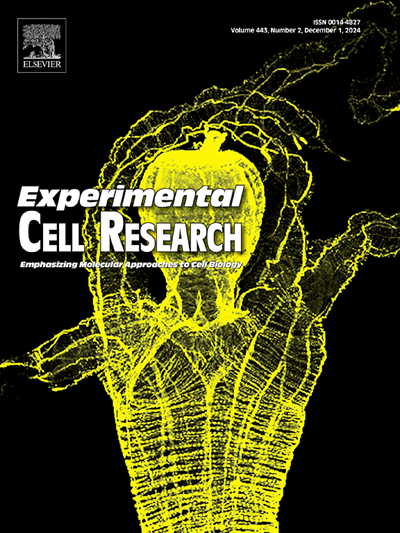Targeted inhibition of NPR3/MAPK pathway enhances dental pulp stem cell multipotency: Mechanistic validation based on ligustrazine (TMP)
IF 3.3
3区 生物学
Q3 CELL BIOLOGY
引用次数: 0
Abstract
Background
The multipotency of dental pulp stem cells (DPSCs) plays a crucial role in dental tissue regeneration, yet its regulatory mechanisms remain incompletely understood. This study aimed to investigate the role of natriuretic peptide receptor 3 (NPR3) in regulating DPSCs functions and validate the mechanism of its targeted inhibitor ligustrazine (TMP).
Methods
NPR3 expression in DPSCs was examined by Western blot and immunohistochemistry. The effects of NPR3 on DPSCs colony formation, migration, and differentiation were investigated through overexpression and knockdown strategies. The relationship between NPR3 and ERK1/2 pathway was explored using molecular biological approaches. High-throughput drug screening was employed to identify TMP as an NPR3 inhibitor, followed by mechanism validation.
Results
NPR3 was highly expressed in mature odontogenic DPCs, with its expression levels closely correlated with DPSCs functions. Functional assays demonstrated that NPR3 inhibited DPSCs colony formation, migration, and differentiation capabilities, while NPR3 knockdown significantly enhanced these functions. Mechanistic studies revealed that NPR3 influenced DPSCs functions through positive regulation of ERK1/2 phosphorylation. Through high-throughput screening, we identified TMP as a specific NPR3 inhibitor that promoted DPSCs functions. Rescue experiments further confirmed that NPR3 overexpression or ERK1/2 inhibitor SCH772984 attenuated TMP-induced enhancement, validating TMP's action through the NPR3/MAPK pathway.
Conclusion
This study reveals the crucial role of the NPR3/MAPK pathway in regulating DPSCs multipotency and demonstrates that TMP enhances DPSCs functions through targeted inhibition of this pathway, providing new therapeutic strategies and drug targets for dental tissue regeneration.
靶向抑制NPR3/MAPK通路增强牙髓干细胞多能性:基于川芎嗪的机制验证
牙髓干细胞(DPSCs)的多能性在牙组织再生中起着至关重要的作用,但其调控机制尚不完全清楚。本研究旨在探讨利钠肽受体3 (NPR3)在调节DPSCs功能中的作用,并验证其靶向抑制剂川芎嗪(TMP)的作用机制。方法采用Western blot和免疫组织化学检测DPSCs中snpr3的表达。通过过表达和敲低策略研究NPR3对DPSCs集落形成、迁移和分化的影响。利用分子生物学方法探讨NPR3与ERK1/2通路之间的关系。采用高通量药物筛选鉴定TMP为NPR3抑制剂,并进行机制验证。结果snpr3在成熟牙源性DPCs中高表达,其表达水平与DPSCs功能密切相关。功能分析表明,NPR3抑制了DPSCs的集落形成、迁移和分化能力,而NPR3敲除显著增强了这些功能。机制研究显示NPR3通过正向调节ERK1/2磷酸化影响DPSCs功能。通过高通量筛选,我们发现TMP是一种特异性的NPR3抑制剂,可以促进DPSCs的功能。救援实验进一步证实,NPR3过表达或ERK1/2抑制剂SCH772984可减弱TMP诱导的增强,证实TMP通过NPR3/MAPK途径发挥作用。结论本研究揭示了NPR3/MAPK通路在调节DPSCs多能性中的重要作用,并证明TMP通过靶向抑制该通路增强DPSCs功能,为牙组织再生提供了新的治疗策略和药物靶点。
本文章由计算机程序翻译,如有差异,请以英文原文为准。
求助全文
约1分钟内获得全文
求助全文
来源期刊

Experimental cell research
医学-细胞生物学
CiteScore
7.20
自引率
0.00%
发文量
295
审稿时长
30 days
期刊介绍:
Our scope includes but is not limited to areas such as: Chromosome biology; Chromatin and epigenetics; DNA repair; Gene regulation; Nuclear import-export; RNA processing; Non-coding RNAs; Organelle biology; The cytoskeleton; Intracellular trafficking; Cell-cell and cell-matrix interactions; Cell motility and migration; Cell proliferation; Cellular differentiation; Signal transduction; Programmed cell death.
 求助内容:
求助内容: 应助结果提醒方式:
应助结果提醒方式:


